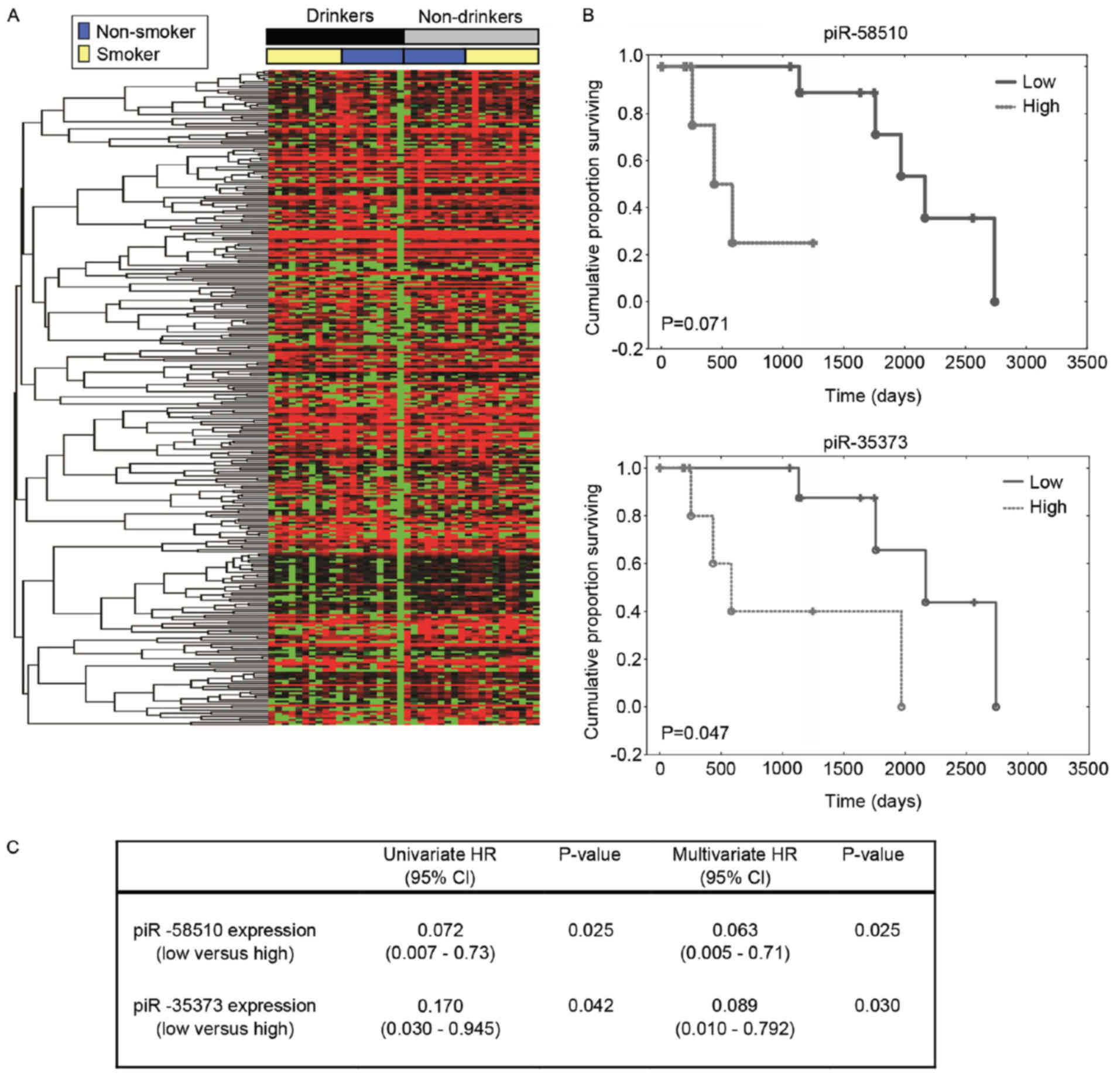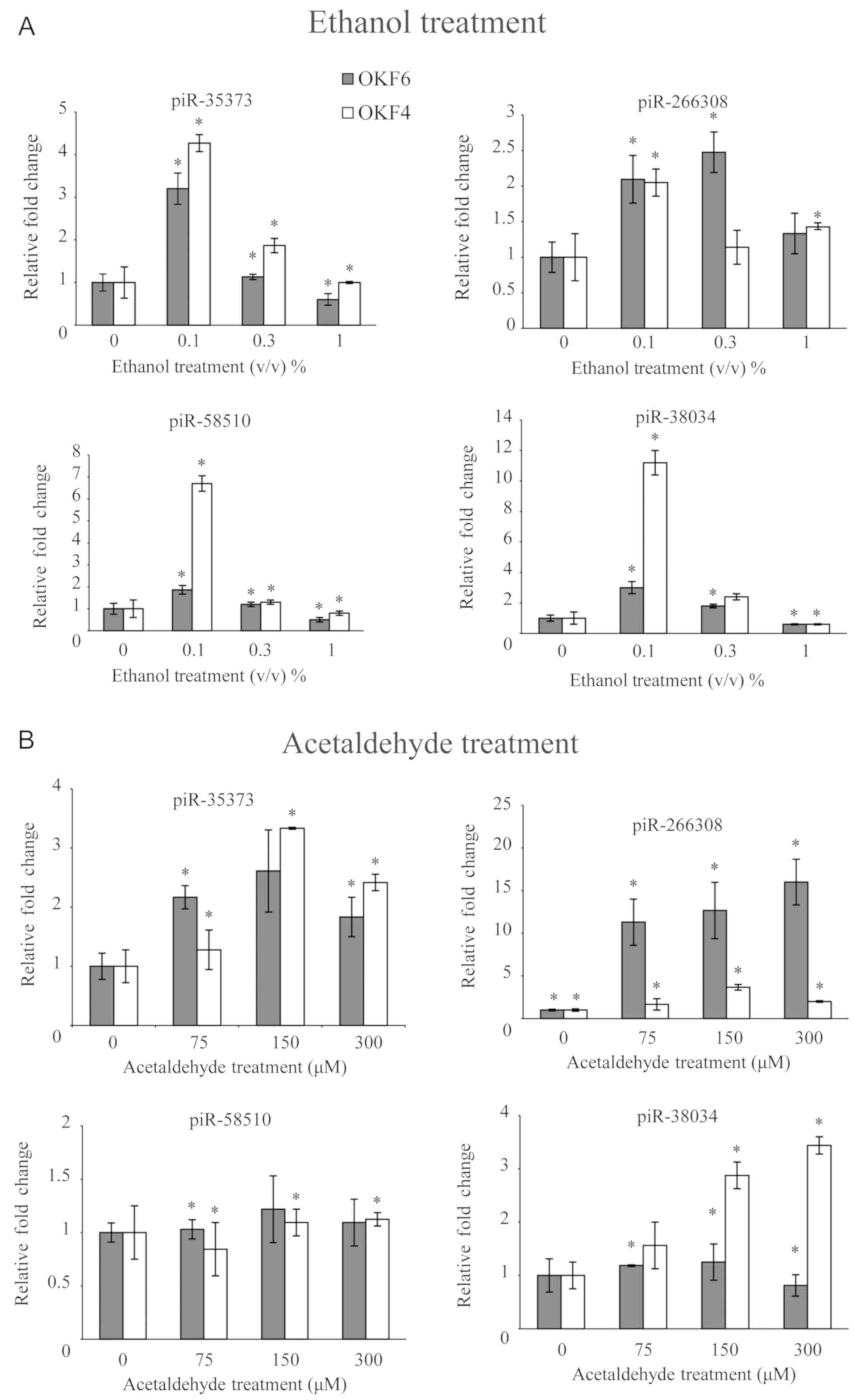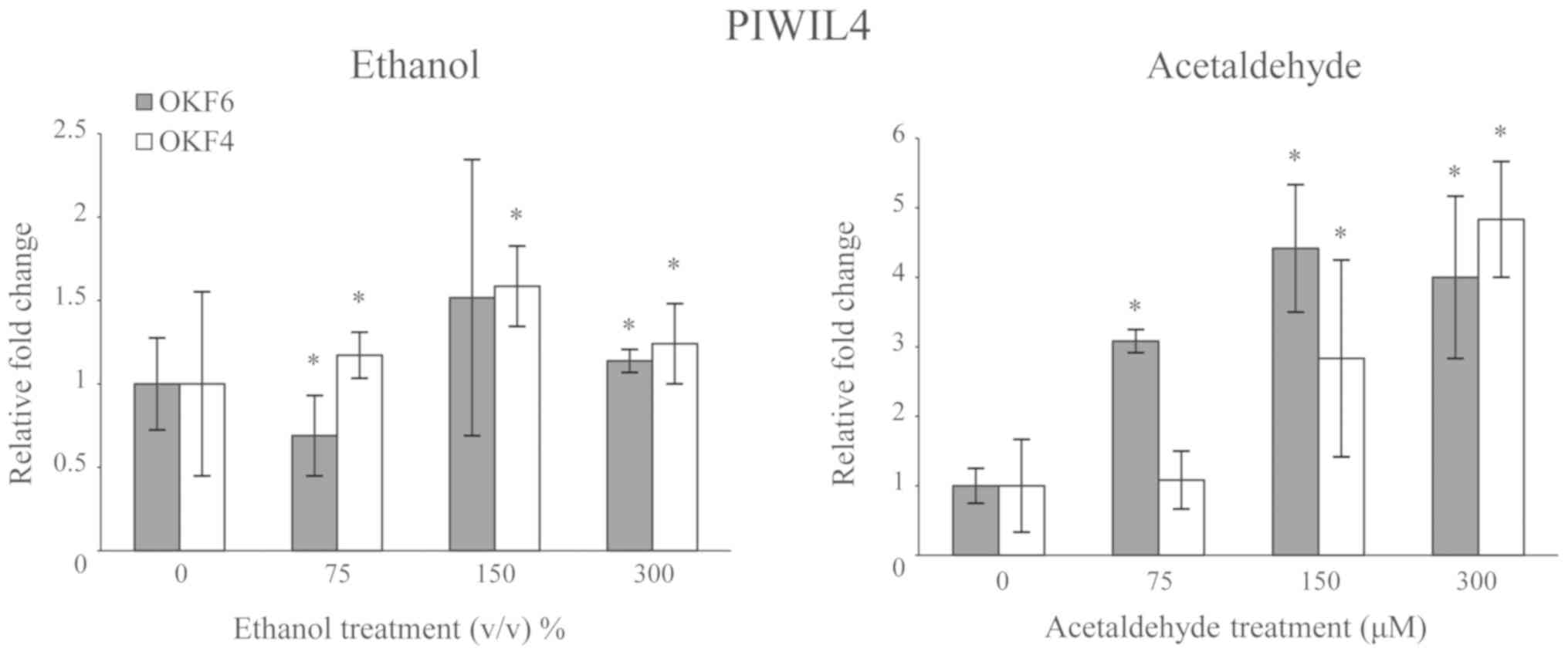|
1
|
Parkin DM, Bray F, Ferlay J and Pisani P:
Global cancer statistics, 2002. CA Cancer J Clin. 55:74–108. 2005.
View Article : Google Scholar : PubMed/NCBI
|
|
2
|
Nemunaitis J and O'Brien J: Head and neck
cancer: Gene therapy approaches. Part 1: Adenoviral vectors. Expert
Opin Biol Ther. 2:177–185. 2002. View Article : Google Scholar : PubMed/NCBI
|
|
3
|
Silveira NJ, Varuzza L, Machado-Lima A,
Lauretto MS, Pinheiro DG, Rodrigues RV, Severino P, Nobrega FG;
Head and Neck Genome Project GENCAPO, ; Silva WA Jr, et al:
Searching for molecular markers in head and neck squamous cell
carcinomas (HNSCC) by statistical and bioinformatic analysis of
larynx-derived SAGE libraries. BMC Med Genomics. 1:562008.
View Article : Google Scholar : PubMed/NCBI
|
|
4
|
Argiris A, Karamouzis MV, Raben D and
Ferris RL: Head and neck cancer. Lancet. 371:1695–1709. 2008.
View Article : Google Scholar : PubMed/NCBI
|
|
5
|
Hashibe M, Brennan P, Benhamou S,
Castellsague X, Chen C, Curado MP, Dal Maso L, Daudt AW, Fabianova
E, Fernandez L, et al: Alcohol drinking in never users of tobacco,
cigarette smoking in never drinkers, and the risk of head and neck
cancer: Pooled analysis in the international head and neck cancer
epidemiology consortium. J Natl Cancer Inst. 99:777–789. 2007.
View Article : Google Scholar : PubMed/NCBI
|
|
6
|
Bobo JK and Husten C: Sociocultural
influences on smoking and drinking. Alcohol Res Health. 24:225–232.
2000.PubMed/NCBI
|
|
7
|
Sturgis EM, Wei Q and Spitz MR:
Descriptive epidemiology and risk factors for head and neck cancer.
Semin Oncol. 31:726–733. 2004. View Article : Google Scholar : PubMed/NCBI
|
|
8
|
Jithesh PV, Risk JM, Schache AG, Dhanda J,
Lane B, Liloglou T and Shaw RJ: The epigenetic landscape of oral
squamous cell carcinoma. Br J Cancer. 108:370–379. 2013. View Article : Google Scholar : PubMed/NCBI
|
|
9
|
Worsham MJ, Chen KM, Ghanem T, Stephen JK
and Divine G: Epigenetic modulation of signal transduction pathways
in HPV-associated HNSCC. Otolaryngol Head Neck Surg. 149:409–416.
2013. View Article : Google Scholar : PubMed/NCBI
|
|
10
|
Huang T, Alvarez A, Hu B and Cheng SY:
Noncoding RNAs in cancer and cancer stem cells. Chin J Cancer.
32:582–593. 2013. View Article : Google Scholar : PubMed/NCBI
|
|
11
|
Girard A, Sachidanandam R, Hannon GJ and
Carmell MA: A germline-specific class of small RNAs binds mammalian
Piwi proteins. Nature. 442:199–202. 2006.PubMed/NCBI
|
|
12
|
Esteller M: Non-coding RNAs in human
disease. Nat Rev Genet. 12:861–874. 2011. View Article : Google Scholar : PubMed/NCBI
|
|
13
|
Galasso M, Sana ME and Volinia S:
Non-coding RNAs: A key to future personalized molecular therapy?
Genome Med. 2(12)2010.PubMed/NCBI
|
|
14
|
Mei Y, Clark D and Mao L: Novel dimensions
of piRNAs in cancer. Cancer Lett. 336:46–52. 2013. View Article : Google Scholar : PubMed/NCBI
|
|
15
|
Cheng J, Deng H, Xiao B, Zhou H, Zhou F,
Shen Z and Guo J: piR-823, a novel non-coding small RNA,
demonstrates in vitro and in vivo tumor suppressive activity in
human gastric cancer cells. Cancer Lett. 315:12–17. 2012.
View Article : Google Scholar : PubMed/NCBI
|
|
16
|
Cheng J, Guo JM, Xiao BX, Miao Y, Jiang Z,
Zhou H and Li QN: piRNA, the new non-coding RNA, is aberrantly
expressed in human cancer cells. Clin Chim Acta. 412:1621–1625.
2011. View Article : Google Scholar : PubMed/NCBI
|
|
17
|
Huang G, Hu H, Xue X, Shen S, Gao E, Guo
G, Shen X and Zhang X: Altered expression of piRNAs and their
relation with clinicopathologic features of breast cancer. Clin
Transl Oncol. 15:563–568. 2013. View Article : Google Scholar : PubMed/NCBI
|
|
18
|
Trapnell C, Roberts A, Goff L, Pertea G,
Kim D, Kelley DR, Pimentel H, Salzberg SL, Rinn JL and Pachter L:
Differential gene and transcript expression analysis of RNA-seq
experiments with TopHat and Cufflinks. Nat Protoc. 7:562–578. 2012.
View Article : Google Scholar : PubMed/NCBI
|
|
19
|
Homann N, Tillonen J, Meurman JH,
Rintamäki H, Lindqvist C, Rautio M, Jousimies-Somer H and Salaspuro
M: Increased salivary acetaldehyde levels in heavy drinkers and
smokers: A microbiological approach to oral cavity cancer.
Carcinogenesis. 21:663–668. 2000. View Article : Google Scholar : PubMed/NCBI
|
|
20
|
Livak KJ and Schmittgen TD: Analysis of
relative gene expression data using real-time quantitative PCR and
the 2(-Delta Delta C(T)) method. Methods. 25:402–408. 2001.
View Article : Google Scholar : PubMed/NCBI
|
|
21
|
Kiang A, Yu MA and Ongkeko WM: Progress
and pitfalls in the identification of cancer stem cell-targeting
therapies in head and neck squamous cell carcinoma. Curr Med Chem.
19:6056–6064. 2012. View Article : Google Scholar : PubMed/NCBI
|
|
22
|
Matta A and Ralhan R: Overview of current
and future biologically based targeted therapies in head and neck
squamous cell carcinoma. Head Neck Oncol. 1:62009. View Article : Google Scholar : PubMed/NCBI
|
|
23
|
Kleiber ML, Diehl EJ, Laufer BI, Mantha K,
Chokroborty-Hoque A, Alberry B and Singh SM: Long-term genomic and
epigenomic dysregulation as a consequence of prenatal alcohol
exposure: A model for fetal alcohol spectrum disorders. Front
Genet. 5:1612014. View Article : Google Scholar : PubMed/NCBI
|
|
24
|
Maccani MA and Knopik VS: Cigarette smoke
exposure-associated alterations to non-coding RNA. Front Genet.
3:532012. View Article : Google Scholar : PubMed/NCBI
|
|
25
|
Aalto AP and Pasquinelli AE: Small
non-coding RNAs mount a silent revolution in gene expression. Curr
Opin Cell Biol. 24:333–340. 2012. View Article : Google Scholar : PubMed/NCBI
|
|
26
|
Siomi MC, Sato K, Pezic D and Aravin AA:
PIWI-interacting small RNAs: The vanguard of genome defence. Nat
Rev Mol Cell Biol. 12:246–258. 2011. View
Article : Google Scholar : PubMed/NCBI
|
|
27
|
Kim SK, Jung WH and Koo JS: Differential
expression of enzymes associated with serine/glycine metabolism in
different breast cancer subtypes. PLoS One. 9:e1010042014.
View Article : Google Scholar : PubMed/NCBI
|
|
28
|
Kim YH, Jung WH and Koo JS: Expression of
metabolism-related proteins in invasive lobular carcinoma:
Comparison to invasive ductal carcinoma. Tumour Biol.
35:10381–10393. 2014. View Article : Google Scholar : PubMed/NCBI
|

















